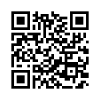PAGI SAMPAI MALAM HARI: REPRESENTASI LATAR WAKTU DALAM CERITA ANAK INDONESIA
Hodidjah Hodidjah, Universitas Pendidikan Indonesia, Indonesia
Umul Kholifah, Universitas Pendidikan Indonesia, Indonesia
Abstract
Children’s Stories). This paper aims to describe the time setting of children’s stories. The study uses content analysis methods with categorization, tabulation, and inference techniques. Research data sources are 10 children’s stories compiled in a book entitled “Naskah Terbaik Lomba Menulis Cerita Anak Tahun 2015 (Best Manuscripts of Children’s Story Writing Competition)”. The book was chosen purposively because it represented the work of Indonesian children who won national writing competitions. The results showed that (1) the time setting in children’s stories was dominated by certain times of the day, such as morning, afternoon, evening, and night; (2) there are several time settings based on month/season/year, time settings based on a person’s life phase, time settings
based on specific history/events, time settings that indicate the past, present, and future; and (3) found a very specific time setting: referring to certain hours, and referring to the position of the sun. Thus, the time setting in the story is represented in various forms. This shows the creativity of Indonesian children in their work.
Keywords: children’s stories, intrinsic elements, time setting.
Keywords
Full Text:
PDFReferences
Anwar, M. S. (2012). Perkembangan Korupsi dalam Novel Indonesia. ATAVISME, 15(2), 133–146.
Apriliya, S. dkk. (2017). Profil Pengarang Anak Indonesia sebagai Role Model Pendidikan Karakter. Indonesian Journal of Primary Education. 1(2). 62-69
Adzahra, Kalyana, dkk. (2016). Mencari Ujung Pelangi, Naskah Terbaik Lomba Menulis Cerita Anak 2015. Jakarta: Kementrian Pendidikan dan Kebudayaan.
Badan Standar Nasional Pendidikan. (2006). Standar Isi Standar Kompetensi dan Kompetensi Dasar Kurikulum Tingkat Satuan Pendidikan Jenjang Sekolah Dasar. Jakarta: BSNP.
Dewi, N. (2015). Manusia dan Lingkungan dalam Cerpen Indonesia Kontemporer: Analisis Ekokritik Cerpen Pilihan Kompas. LITERA, 14(2), 376–391.
Given, L.M. 2008. The SAGE Encyclopedia of Qualitative Research and Method, 1 & 2. Newyork: SAGE Publications.
Hansen, I. V. (1968). The Spanish setting: a re-appraisal of. Children’s Literature in Education, 186–191.
Hartono. (2015). Warna Lokal dalam Novel Indonesia Periode 1980-1995. LITERA, 14(2), 392–403.
Irawati, R. P., & Purwani, N. (2013). Nilai-Nilai Moralitas dan Budaya Asing dalam Sastra Anak Terjemahan Melalui Pemaknaan Sastra Anak oleh Anak. Lingua, IX(1), 46–53.
Kusmarwanti. (2010). Karakteristik Cerpen-cerpen Cyber. LITERA, 9(2), 190–203.
Marquaβ, Reinhard. 1997. Duden Abiturhilfen. Erzählende Prosatexteanalysieren, Training für Klausuren und Abitur (12. Und 13. Schuljahr). Mannheim: Duden Verlag.
Moleong, 2006. Metodologi Penelitian Kualitatif (Edisi Revisi). Bandung: Rosda Karya
Munaris. (2011). Resepsi Pembaca terhadap Unsur Fakta Cerita dalam Novel Ayat Ayat Cinta Karya Habiburrahman El- Shyrazi. LITERA, 10(2), 171–182.
Nurgiyantoro, Burhan. (2013). Teori Pengkajian Fiksi. Yogyakarta: Gadjah Mada University Press.
Nurgiyantoro, Burhan. (2013). Sastra Anak Pengantar Pengembangan Dunia Anak. Yogyakarta: Gadjah Mada University Press.
Rogers, T. (2009). Interpreting ourselves and our worlds Literary Theory and Children ’ s Literature : Interpreting Ourselves and Our Worlds. Theory Into Practice, 38(3), 138–146. https://doi.org/10.1080/00405849909543845
Strehle, E. (1999). Social Issues : Connecting Children to Their World. Children’s Literature in Education, 30(3), 213–220.
Swandayani, D., Santoso, I., & Nurhayati, A. (2013). Eropa Berdasarkan Tiga Novel Umberto Eco: Pembelajaran Sejarah Bagi Pembaca Indonesia. ATAVISME, 16(1), 27–41.
Thomas, J. (1986). Woods and Castles , Towers and Huts : Aspects of Setting in the Fairy Tale. Children’s Literature in Education, 17(2), 126–134.
DOI: https://doi.org/10.21831/diksi.v28i2.33354
Refbacks
- There are currently no refbacks.
Copyright (c) 2020 Diksi
Jurnal Diksi is published by Faculty of Languages, Arts, and Culture, Universitas Negeri Yogyakarta. It is licensed under a Creative Commons Attribution-ShareAlike 4.0 International License. Based on a work at http://journal.uny.ac.id/index.php/diksi
Our Journal has been Indexed by:
Diksi Journal is published by the Faculty of Languages, Arts, and Culture Universitas Negeri Yogyakarta in collaboration with Himpunan Sarjana Kesusasteraan Indonesia (HISKI)
Supervised by:

2.png)















